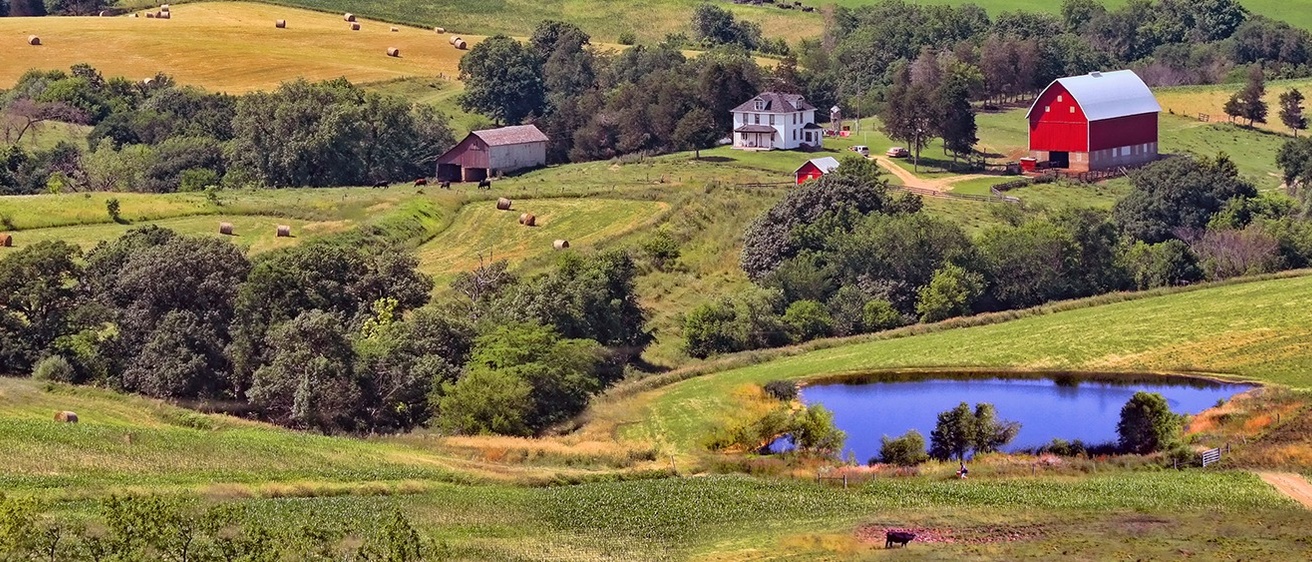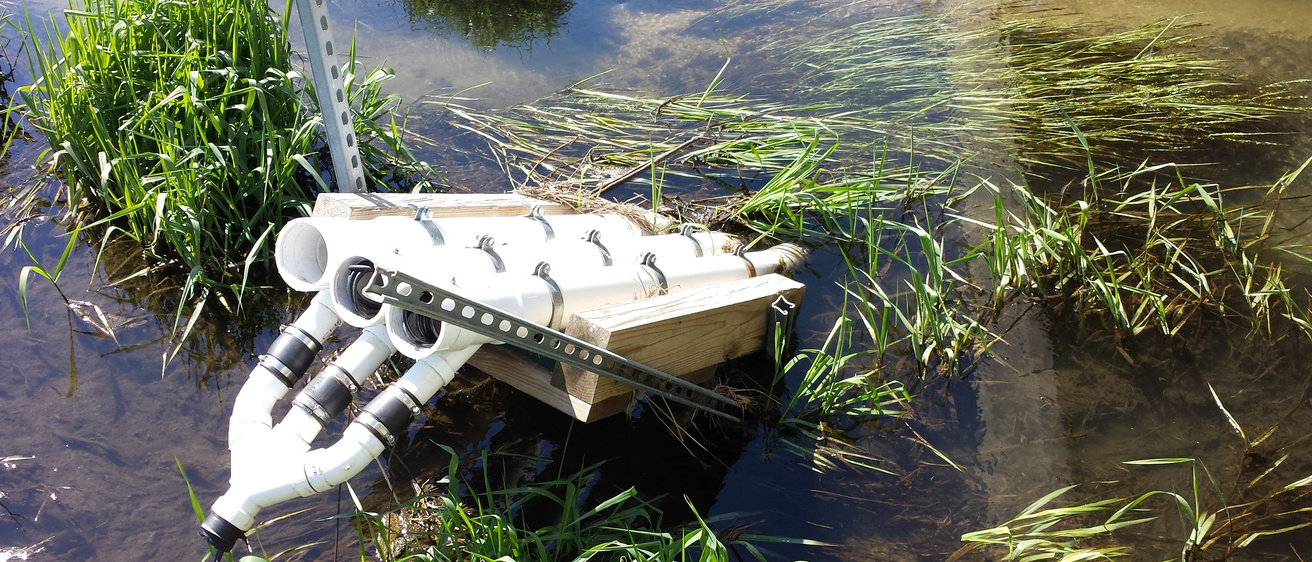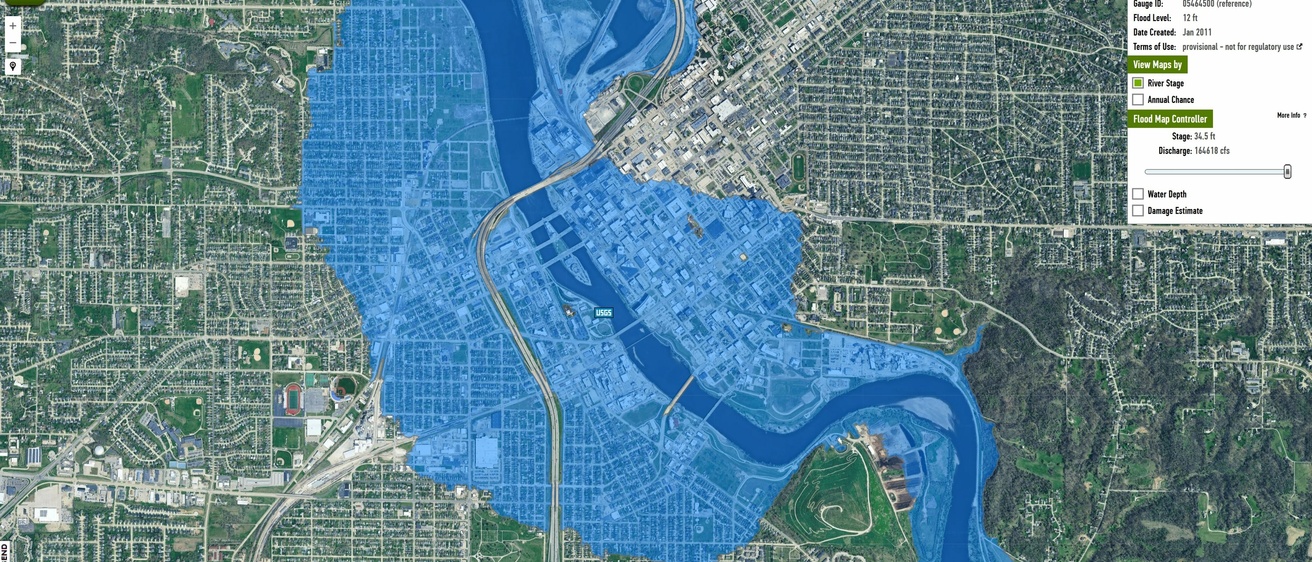The study of rivers and watersheds has been a primary area of research at IIHR since the institute’s founding more than a century ago. From early modeling efforts that helped support the creation of the nine-foot navigation channel in the Mississippi River to the recent Iowa Watershed Approach, IIHR researchers have been at the forefront of riverine research.
Did You Know?
IIHR’s fieldwork capabilities support our research with accurate data on river flow rates, velocities, depths, water quality, and more.
Other capabilities include:
- Single-beam and multi-beam bathymetric surveys
- Sediment sampling and coring with an onboard drilling rig
- Large-scale particle image velocimetry (LSPIV)
- Development and deployment of flood-related instrumentation
Iowa Flood Center
As a national leader in flood science, the Iowa Flood Center provides technical support to many local, state, and federal partners by developing innovative tools and creative watershed management strategies that are building a more flood-resilient Iowa.
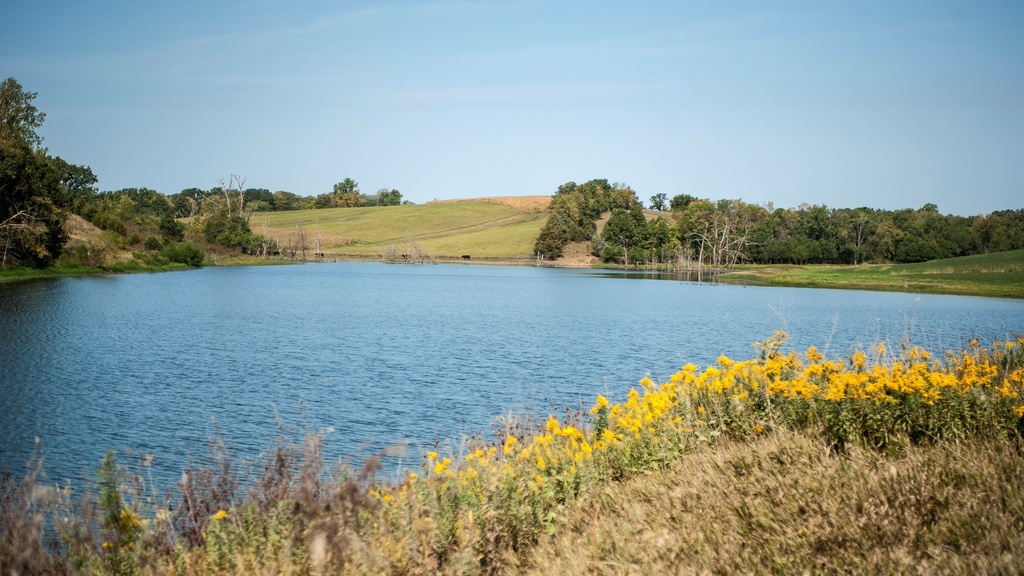
Iowa Watershed Approach
The Iowa Watershed Approach offers a vision for Iowa’s future, building a watershed-based community to achieve proactive goals, including flood reduction and mitigation and improved water quality. The IWA programs works progressively with Iowa's landscape to enhance water management through nature-based solutions.
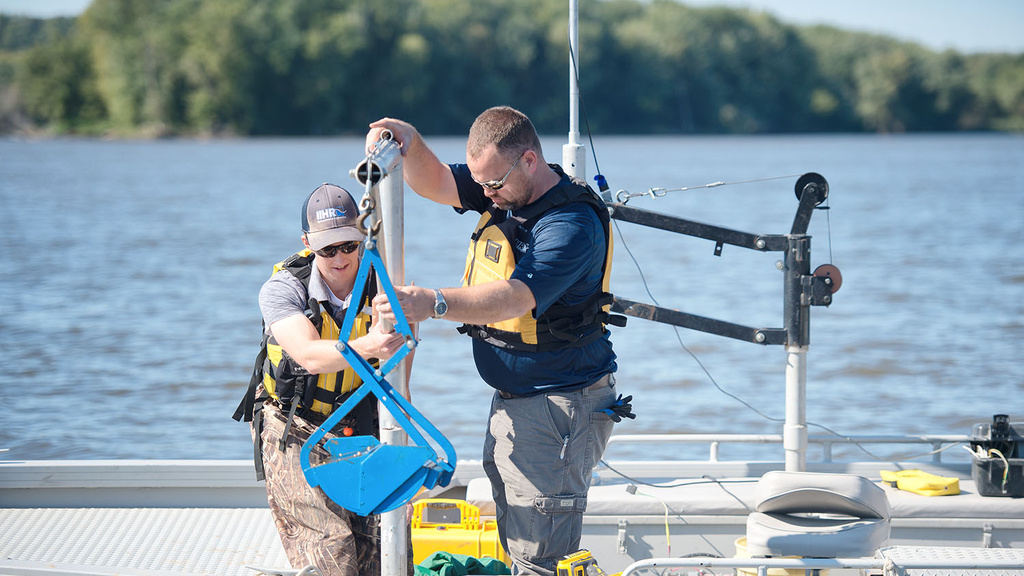
Mississippi River Research
IIHR’s work on the Mississippi River dates to the 1920s, when researchers set out to measure the flow of the river just upstream of the Keokuk Dam (now part of Lock and Dam No. 19) at Keokuk, Iowa. Today, IIHR's LACMRERS facility on banks of the Mississippi River in Muscatine, Iowa continues to support IIHR's large-scale river research initiatives.



